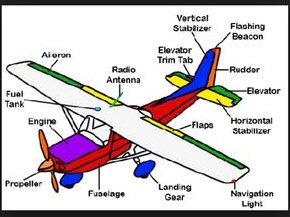Cabin Door
Cabin door is installed on each side of the airplane. Each door has an outer sheet skin that is chemically bonded to an inner pan assembly. Each door has a latch assembly, an inside handle, a pair of external hinges, and a doorstop assembly. Cabin Door Adjustment/Test A. Adjust the new cabin doors. CAUTION: Do not adjust the bonded door flange or the airplane structure with force. Damage to the bonded areas and the structural components can occur. (1) Trim the door flange as required to get a gap between the door skin and fuselage skin of 0.09 inch (2.3 mm) or less. B. Adjust the cabin doors. NOTE: The cabin doors must be smooth with the fuselage skin. (1) Use the slots at the door latch plate to adjust the latch assembly and the bolt engagement with the rotary clutch on the door post.
